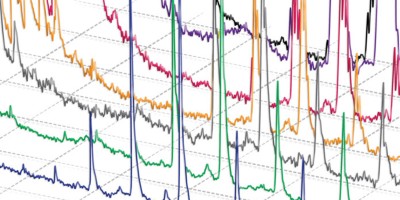Abstract
Isolation of monoclonal antibodies is an important technique for understanding the specificities and characteristics of antibodies that underlie the humoral immune response to a given antigen. Here we describe a technique for isolating monoclonal antibodies from human peripheral blood mononuclear cells. The protocol includes strategies for the isolation of switch-memory B cells from peripheral blood, the culture of B cells, the removal of the supernatant for screening and the lysis of B cells in preparation for immunoglobulin heavy-chain and light-chain amplification and cloning. We have observed that the addition of cytokines IL-2, IL-21 and irradiated 3T3-msCD40L feeder cells can successfully stimulate switch-memory B cells to produce high concentrations of IgG in the supernatant. The supernatant may then be screened by appropriate assays for binding or for other functions. This protocol can be completed in 2 weeks. It is adaptable to use in other species and enables the efficient isolation of antibodies with a desired functional characteristic without prior knowledge of specificity.



Similar content being viewed by others
References
Wilson, P.C. & Andrews, S.F. Tools to therapeutically harness the human antibody response. Nat. Rev. Immunol. 12, 709–719 (2012).
Kohler, G. & Milstein, C. Continuous cultures of fused cells secreting antibody of predefined specificity. Nature 256, 495–497 (1975).
Plaisant, P. et al. Human monoclonal recombinant Fabs specific for HCV antigens obtained by repertoire cloning in phage display combinatorial vectors. Res. Virol. 148, 165–169 (1997).
Mao, S. et al. Phage-display library selection of high-affinity human single-chain antibodies to tumor-associated carbohydrate antigens sialyl Lewisx and Lewisx. Proc. Natl. Acad. Sci. USA 96, 6953–6958 (1999).
Li, J. et al. Human antibodies for immunotherapy development generated via a human B cell hybridoma technology. Proc. Natl. Acad. Sci. USA 103, 3557–3562 (2006).
Traggiai, E. et al. An efficient method to make human monoclonal antibodies from memory B cells: potent neutralization of SARS coronavirus. Nat. Med. 10, 871–875 (2004).
Aman, P., Ehlin-Henriksson, B. & Klein, G. Epstein-Barr virus susceptibility of normal human B lymphocyte populations. J. Exp. Med. 159, 208–220 (1984).
Bonsignori, M. et al. Analysis of a clonal lineage of HIV-1 envelope V2/V3 conformational epitope-specific broadly neutralizing antibodies and their inferred unmutated common ancestors. J. Virol. 85, 9998–10009 (2011).
Tiller, T. et al. Efficient generation of monoclonal antibodies from single human B cells by single cell RT-PCR and expression vector cloning. J. Immunol Methods 329, 112–124 (2008).
Scheid, J.F. et al. Sequence and structural convergence of broad and potent HIV antibodies that mimic CD4 binding. Science 333, 1633–1637 (2011).
Smith, K. et al. Rapid generation of fully human monoclonal antibodies specific to a vaccinating antigen. Nat. Protoc. 4, 372–384 (2009).
Wu, X. et al. Rational design of envelope identifies broadly neutralizing human monoclonal antibodies to HIV-1. Science 329, 856–861 (2010).
Scheid, J.F. et al. Broad diversity of neutralizing antibodies isolated from memory B cells in HIV-infected individuals. Nature 458, 636–640 (2009).
Walker, L.M. et al. Broad and potent neutralizing antibodies from an African donor reveal a new HIV-1 vaccine target. Science 326, 285–289 (2009).
Corti, D. et al. A neutralizing antibody selected from plasma cells that binds to group 1 and group 2 influenza A hemagglutinins. Science 333, 850–856 (2011).
Jourdan, M. et al. An in vitro model of differentiation of memory B cells into plasmablasts and plasma cells including detailed phenotypic and molecular characterization. Blood 114, 5173–5181 (2009).
Ettinger, R. et al. IL-21 induces differentiation of human naive and memory B cells into antibody-secreting plasma cells. J. Immunol. 175, 7867–7879 (2005).
Huang, J. et al. Broad and potent neutralization of HIV-1 by a gp41-specific human antibody. Nature 491, 406–412 (2012).
Kwong, P.D. & Mascola, J.R. Human antibodies that neutralize HIV-1: identification, structures, and B cell ontogenies. Immunity 37, 412–425 (2012).
Kershaw, M.H. et al. Immunization against endogenous retroviral tumor-associated antigens. Cancer Res. 61, 7920–7924 (2001).
Georgiev, I.S. et al. Delineating antibody recognition in polyclonal sera from patterns of HIV-1-isolate neutralization. Science 340, 751–756 (2013).
Acknowledgements
This project has been funded in part with federal funds from the Intramural Research Programs of the NIAID. The content of this publication does not necessarily reflect the views or policies of the US Department of Health and Human Services, nor does mention of trade names, commercial products or organizations imply endorsement by the US Government.
Author information
Authors and Affiliations
Contributions
M.C., L.L., J.R.M., N.A.D.-R. and N.S.L. developed and optimized the B cell culture protocol. J.H., L.L. and B.H.K. performed B cell sorting and isolated potent and broadly neutralizing antibodies. S.A.M. led the clinical care of the patients. C.-L.L., E.T. and R.T.B. screened the B cell culture supernatants for neutralization activity.
Corresponding author
Ethics declarations
Competing interests
The authors declare no competing financial interests.
Supplementary information
Supplementary Text and Figures
ELISA plate layout. (PDF 217 kb)
Rights and permissions
About this article
Cite this article
Huang, J., Doria-Rose, N., Longo, N. et al. Isolation of human monoclonal antibodies from peripheral blood B cells. Nat Protoc 8, 1907–1915 (2013). https://doi.org/10.1038/nprot.2013.117
Published:
Issue Date:
DOI: https://doi.org/10.1038/nprot.2013.117
- Springer Nature Limited
This article is cited by
-
Cross-protective antibodies against common endemic respiratory viruses
Nature Communications (2023)
-
B cell analyses after SARS-CoV-2 mRNA third vaccination reveals a hybrid immunity like antibody response
Nature Communications (2023)
-
Anti-TRAP/SSP2 monoclonal antibodies can inhibit sporozoite infection and may enhance protection of anti-CSP monoclonal antibodies
npj Vaccines (2022)
-
Hybrid immunity improves B cells and antibodies against SARS-CoV-2 variants
Nature (2021)
-
Integrated pipeline for the accelerated discovery of antiviral antibody therapeutics
Nature Biomedical Engineering (2020)





